Higher education officials ended 2021 session with mixed budget news, prospect of another fight over removing regents from constitution
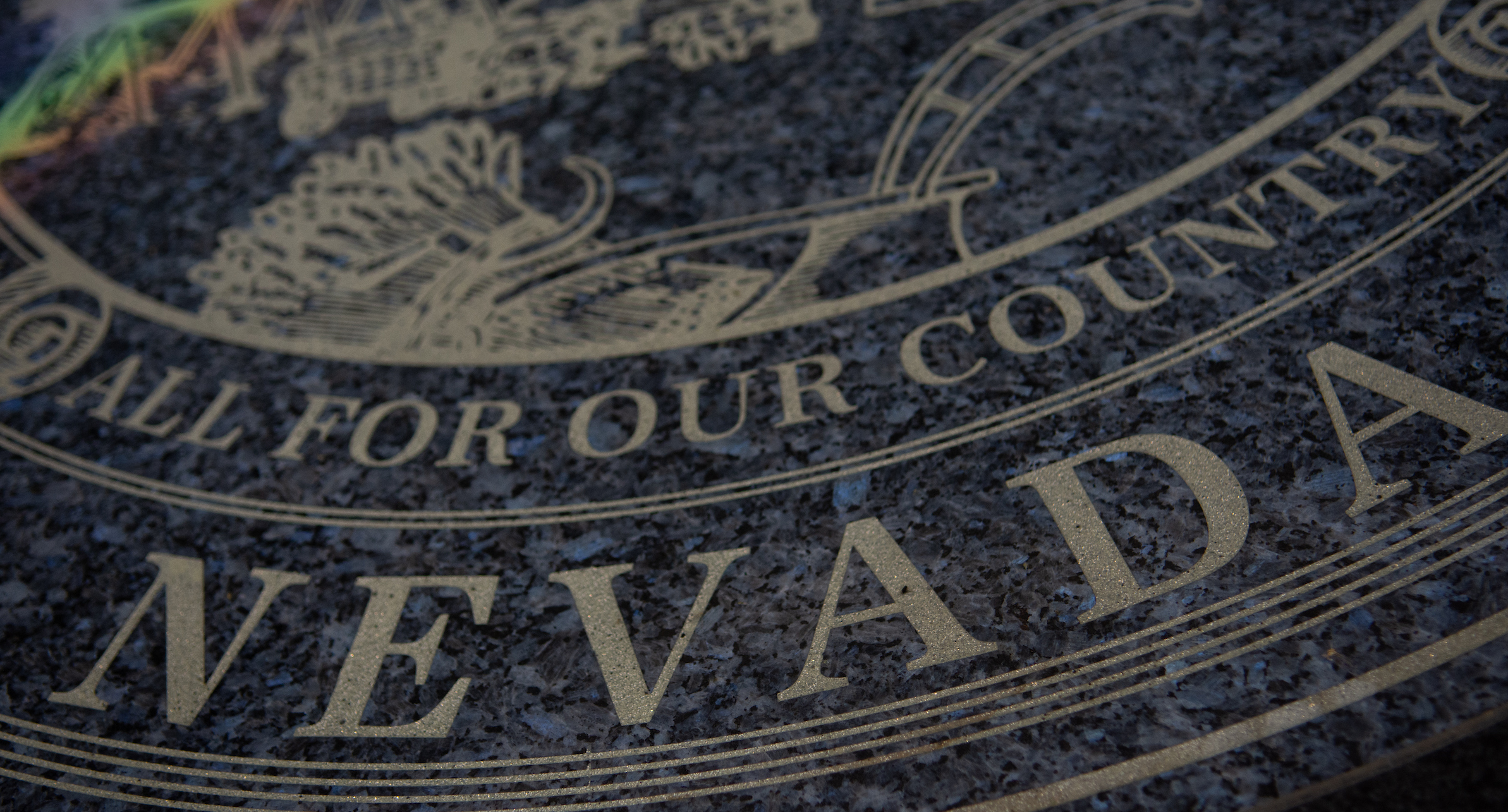
Administrators, officials and lobbyists in the orbit of Nevada’s higher education system shared a common refrain coming out of this year’s legislative session: It could have been worse.
“I think relative to where we started the process, we ended up in a much better place,” Nevada System of Higher Education CFO Andrew Clinger said. “Now, I wouldn't say that we're in a great place. We're better than we were.”
When the dust settled, NSHE escaped with roughly $76 million in cuts to operational budgets, after another $93 million had been restored to institutional coffers through federal COVID relief dollars. It was a surprise boon and last-minute addback aimed at lifting a hiring freeze and avoiding the looming prospect of faculty layoffs.
Even now, optimism remains high that lawmakers will use some of the roughly $2.7 billion in federal aid allocated to Nevada through the American Rescue Plan to erase some or all of the outstanding $76 million cut — though exactly how or when that could happen remains unknown.
While the budget drew much of the attention during the session, lawmakers also passed dozens of higher-education related bills, including measures that formalized land-grant university status for UNLV, created fee waivers for Native students and began the process of amending the Board of Regents out of the state Constitution.
Budget woes blunted, but not erased
When the legislative session began in early February, vaccinations had only just begun in earnest. Among the many unknowns at the time, it remained unclear when — and by how much — the state’s precarious revenue outlook would rebound after a devastating 2020.
Amid that uncertainty, Gov. Steve Sisolak proposed a two-year budget that skimmed 12 percent off state agency budgets. That included NSHE, where 12 percent over two years amounted to a cumulative $169 million in cuts.
At the time, the 12 percent figure, combined with several key restorations of tens of millions in capital project funding, was seen as something of a win. Budgets fell by roughly 19 percent in 2020 by the end of last year’s special legislative session, but several administrators, system officials and lobbyists expressed relief at the time that the governor and lawmakers declined to go even further in dipping into higher education coffers to fill severe budget holes elsewhere.
Through the course of the 2021 session, higher education advocates were concerned that legislators might use higher education budgets as a release valve. And at multiple junctures, lawmakers on key budget committees pressed higher education officials for more information on individual budget accounts, and asked why formula-based funding tied to student credit-hours, referred to as caseload growth, was increasing even as enrollment numbers fell.
“I've said this to almost every NSHE advocate and lobbyist that I have ever met with, that I appreciate where they are, [but] that if I have a choice between kindergarteners and college kids, I'm there for the kindergarteners,” Assembly Ways and Means Chair Maggie Carlton (D-Las Vegas) said during a May committee meeting. “They need my voice, they need our voice.”
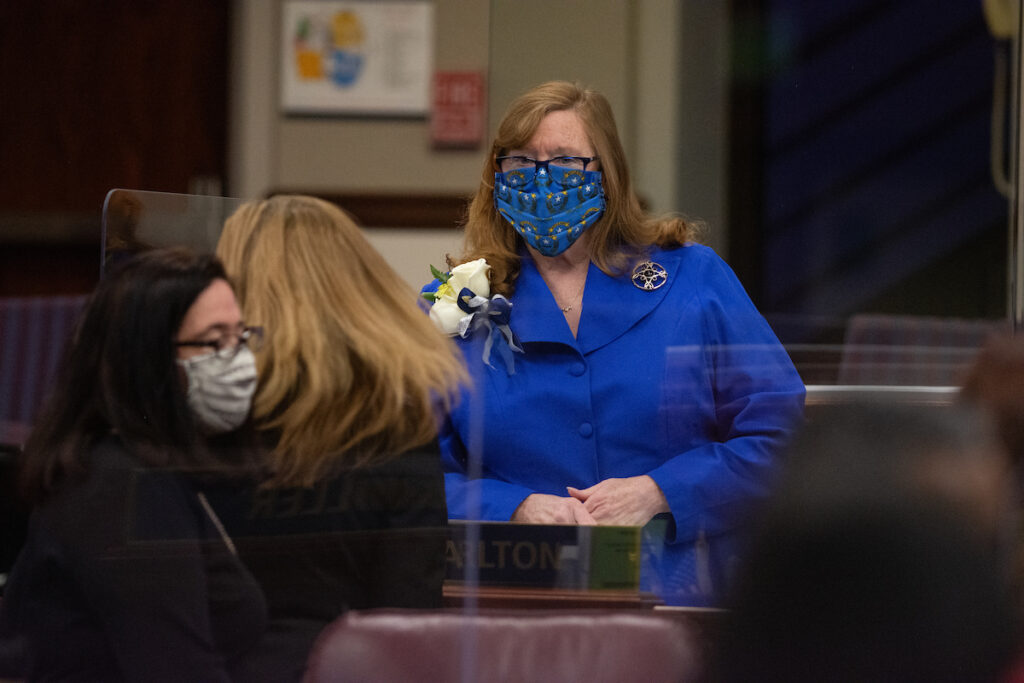
Clinger and system Chancellor Melody Rose argued to legislators that the increase came because formula budgets lagged the current budget cycle by roughly two years, and the increase was in essence a built-in “catch-up” mechanic.
That question came in addition to claims from committee members that NSHE was better positioned to absorb cuts in large part because of federal aid dollars set aside specifically for colleges and universities through the Higher Education Emergency Relief Fund (HEERF).
Created as part of the original CARES Act and boosted twice by federal relief measures in December and again as part of the American Rescue Plan (ARP), HEERF ultimately funneled more than $369 million to NSHE institutions, with a little less than half — $160 million — set aside for student financial aid.
In documents presented to the committee in the waning days of the session, Clinger argued that the HEERF money had only offset deep revenue losses at individual institutions, essentially covering massive budget holes created by empty dorms, unfilled stadium seats and unbought parking passes. Clinger said the HEERF allocation would not cover the sum total of expected revenue losses and a 12 percent across-the-board cut.
Even now, as the widespread lifting of COVID-19 restrictions and the expansion of vaccination programs are buoying state and local economies, Clinger told The Nevada Independent that revenue projections have yet to change. The latest round of HEERF money allocated through the ARP will still be set aside to cover expected losses in non-state funding.
The biggest budgetary win for NSHE came in the final days of the session, when budget committees opted to fully restore personnel budgets and added back roughly $93 million dollars in an effort to unfreeze hundreds of vacant positions across all eight institutions.
However, lawmakers left another $76 million in operational cuts in place while also instituting a handful of fee waiver bills. Most notable among the waivers was AB262, which essentially waived tuition and fees for members and descendents of any federally-recognized Indian tribe or nation in Nevada.
The fee waivers were hailed by Native leaders as critical expansions of educational access, and saw support from both UNR and UNLV. After AB262 was signed by the governor, Nevada Indian Commission Executive Director Stacey Montooth said the measure “exponentially broadened” the futures of the state’s Native Americans.
But NSHE officials and members of the Board of Regents have raised concerns that such waivers were delivered to the system as “unfunded mandates” with fiscal impacts that are difficult to quantify because of the impact on future revenues, ultimately compounding operational cuts.
“So [the Legislature] cut the budget, and then tell higher ed that they have to give certain students free or reduced tuition,” Regent Jason Geddes said in an interview. “And most of [the waivers] I'm very favorable about, and I've supported, like AB262, but it is tough to balance.”
Faculty labor priorities see mixed results
As lawmakers mulled the budget, faculty advocates sought action on a number of their own labor priorities with mixed results.
In the win column, legislators approved language that allowed regents to implement the first permanent merit-based pay raise funding pool in more than a decade.
Under a policy later approved by regents during an early June meeting, institutions will use a 1 percent pool from their budgets to fund performance-based pay increases, functionally replacing a state-funded 2 percent pool that was eliminated as part of Recession-era cuts 12 years ago.
Representatives with the Nevada Faculty Alliance (NFA), including UNLV’s Doug Unger, called the change “a victory” and “a long time coming,” pointing to the pool as a key factor in helping address issues of salary compression and worsening faculty morale.
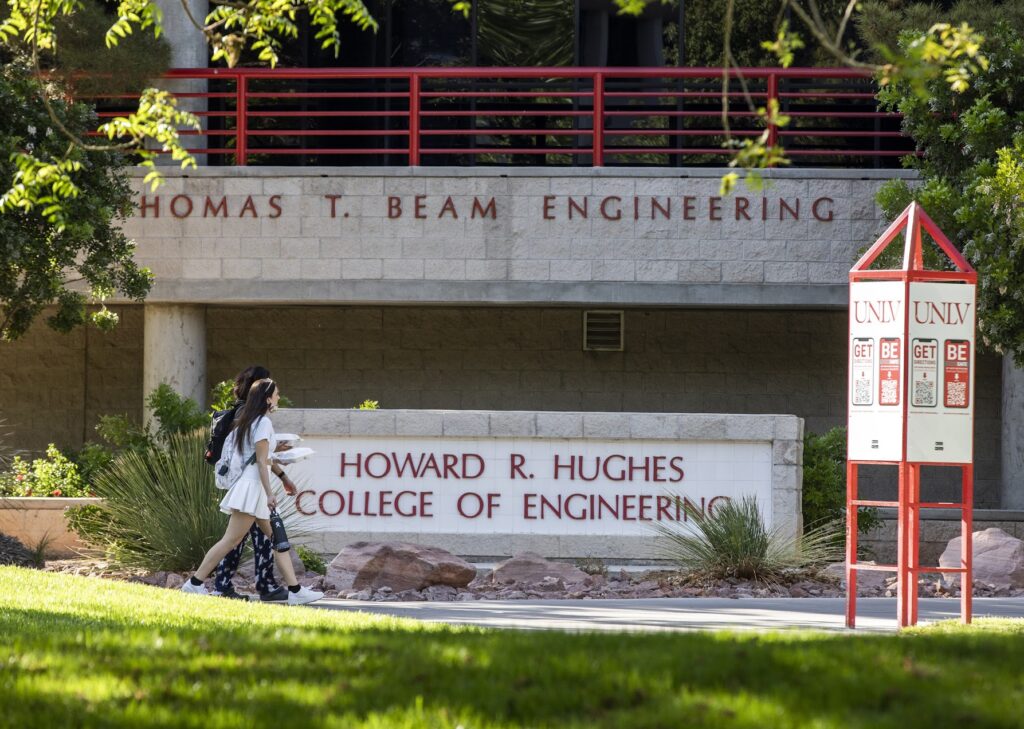
Even so, the NFA’s main priority, SB373, struck a logjam in the Senate Finance Committee, where it ultimately died without receiving a second hearing.
A measure that would have granted Nevada higher education faculty collective bargaining rights under state law, SB373, was pitched by NFA leaders as a necessary step toward removing control of the current bargaining process from NSHE and the Board of Regents.
“The problem with that is that our employers, who are the Board of Regents, both write and interpret the rules of engagement for collective bargaining,” Kent Ervin, Vice President of the Nevada Faculty Alliance, said. “And we have no way of going to an outside group for mediation or arbitration for efficient resolution of any disputes.”
Under the current system, faculty can collectively bargain under NSHE code, just as CSN faculty did last year. However, such bargaining units are unable to directly negotiate with the state for pay and benefits, leaving them unable to ask for the 3 percent cost-of-living adjustment (COLA) raise offered to certain state employee unions.
“It’s rather ironic that at the same time, our collective bargaining bill, to give us the right to negotiate under the state system, was not passing through the Legislature, we were told that, ‘well, unless you have a collective bargaining agreement with the state, you can't get this higher COLA, you have to have the agreement first,’” Ervin said. “And yet, we have no way in statute to have that agreement.”
And while faculty fears over impending layoffs were allayed by the restoration of personnel budgets, other compensation cuts remain in place. That includes deep cuts to the Public Employees Benefits Program (PEBP), including reductions in life insurance benefits and the wholesale elimination of long-term disability insurance.
The expected pain from those cuts was partially mitigated with the surprise addition of a premium holiday. But with the enrollment period for the current fiscal year already come and gone, Ervin and other faculty advocates are still “cautiously hopeful” that lawmakers could use federal relief money to plug holes for the 2023 fiscal year.
The Accountability Question
Each of the last three legislative sessions has had a similar yet distinctive throughline: a visible lack of trust between key legislators and NSHE, its chancellor and the Board of Regents.
The history of tension between the Legislature and the regents spans decades. Unlike many other states, the Board of Regents that govern higher education in Nevada are written directly into the Constitution with the power to control not only universities, but also community colleges. Critics of the board have often charged that it and NSHE at large have wielded that constitutional status as a legal shield, at times casting itself as a fourth branch of government in legal disputes with the Legislature.
The relationship deteriorated quickly and severely in the wake of a 2016 scandal that saw then-Chancellor Dan Klaich ousted over the revelation that his office had misled legislators during the high-stakes revision of the system’s funding formula in 2012.
The incident and other lingering divisions between legislators and the regents finally led to 2017's AJR5, which sought to expand legislative oversight by pulling the Board of Regents from the state Constitution entirely.
After four years of winding through the legislative process, AJR5 became Question 1 on the 2020 ballot. But after all those years, including a year of full-throated public campaigning, Question 1 was rejected by voters by a narrow margin of just 3,877 votes out of more than 1.2 million ballots cast.
Just five months after the ballot question failed, lawmakers introduced and passed SJR7, a legislatively-proposed constitutional amendment that would remove the Board of Regents from the state Constitution, in essence mirroring Question 1 with a handful of small tweaks.
Like AJR5 before it, SJR7 would need to secure passage from both houses in another legislative session before it could head to the voters for final approval in 2024. The measure cruised easily through both the Assembly and Senate, encountering only a bit of late-session resistance from a small bloc of 11 conservative Assembly Republicans — far short of the 22 votes needed to block the measure.
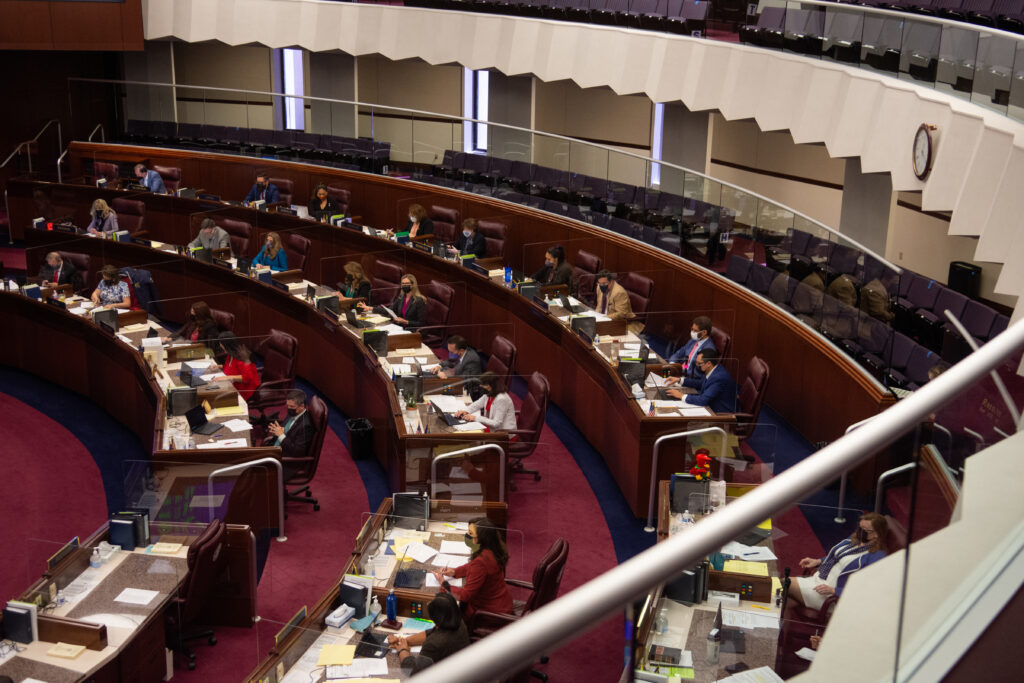
Question 1’s backers have coalesced around SJR7, now armed, they say, with the knowledge of why Question 1 failed at the ballot box.
“I think there's just significant evidence that can't be ignored that the public was very, very confused about it,” said Warren Hardy, a former state senator and lobbyist with the nonprofit Council for a Better Nevada, which funded efforts supportive of Question 1 on the 2020 ballot. “And so being as close as it was, I feel like having a question clarified and very specific about the fact that it just simply looks at taking the regents out of the Constitution, but yet doesn't change any of the statutory provisions related to how they're elected or anything.”
The question of whether the regents should be enshrined in the state Constitution has also been linked to a related but separate question: Should the regents be elected at all?
Both sides of that issue have argued that the possibility of appointing, rather than electing regents — which is not a policy addressed either by Question 1 or by SJR7 — should not be part of the debate over the regents’ constitutional status.
Even so, the two issues have so-far been inextricably tied together, both in opposition rhetoric and in the Legislature.
In the midst of the second round of discussions in 2019, then-Democratic Sen. Joyce Woodhouse — a co-sponsor of AJR5 — proposed SB354. It was a sweeping measure that would have completely overhauled the makeup of the Board of Regents (if Question 1 on the 2020 ballot were to pass), dropping the number of regents from 13 to nine and splitting the board between just five elected regents and four appointed by the governor.
Even though the bill failed to pass, it has since served as proof-positive among Question 1 skeptics that Legislators will likely attempt to appoint at least some regents should the legal bar be lowered and the board is removed from the Constitution.
Vocal Question 1 critic and Regent Jason Geddes asked in an interview with The Nevada Independent, in light of moves by lawmakers to slash budgets, enforce fee waivers and audit system finances, “What is the overall intent, if not to make the board appointed, not elected?”
“I think [appointed regents] is still the through line,” Geddes said. “I don't think they should have brought [SJR7] this session. To me, it's somewhat dismissive of the electorate to say, ‘they just didn't understand it. and even though they voted it down, we're going to bring it back.’”
Proponents of SJR7 argue, just as they did with Question 1, that the entire debate is and should be about the accountability of the board to lawmakers. To that end, among the differences between last year’s failed ballot question and this year’s renewed joint-resolution is the addition of a Constitutional requirement for lawmakers to audit the higher education system every two years.
Lawmakers would have the power to initiate an audit regardless of the passage of SJR7, and indeed moved this session to begin just such a process with AB416. But, Hardy said, the enshrinement of a legislative audit in the language of SJR7 was included because “the public overwhelmingly supported that provision.”
“We started emphasizing a little bit because of the public interest that was in it,” Hardy said, citing internal polling and focus groups. “But certainly for the most part, when we were trying to figure out what people did and didn't understand about it, it was pretty clear that those who supported it understood [audits] and wanted it included.”
The broader question of accountability often dips deeper into something more foundational: Should Nevada overhaul the structures through which it governs higher education?
One potential kickstart to discussions about new governance models could come from AB450, a bill backed by the governor and creating an interim committee tasked with examining whether governance and funding structures for Nevada community colleges align with broader workforce development goals.
AB450 was the end result of a promise Sisolak made in his State of the State address in January, when he pledged to call on lawmakers to work with NSHE “to develop a framework to transition Nevada’s community colleges to a new independent authority that will focus on making Nevadans job ready.”
In the time since, the governor has at least twice called for increased community college funding — once during a post-session bill signing event, and again during a roundtable event with U.S. Labor Secretary Marty Walsh last month.
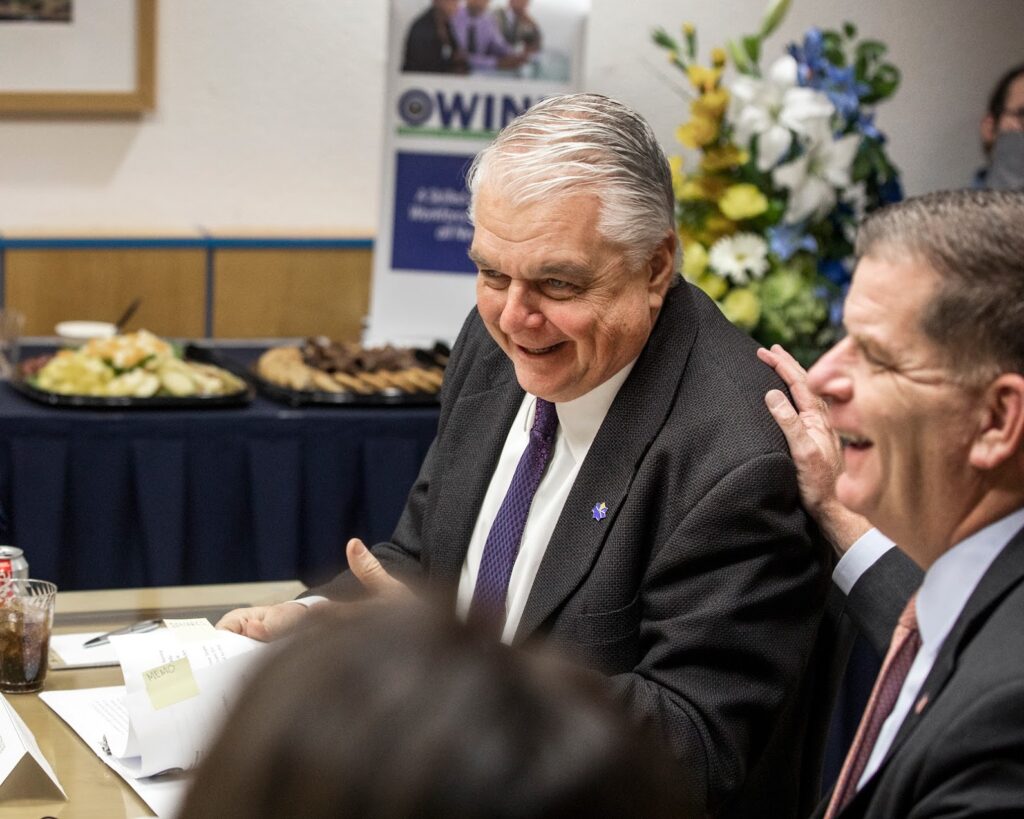
“I've always maintained — from my time on the Board of Regents to the [Clark] County Commission to now as governor — our community colleges are underfunded and underappreciated and overlooked, unfortunately,” Sisolak said during the roundtable.
What form such an increase would take is unclear. But should AB450 initiate new talks on a funding formula revision, higher education administrators said it is likely that any community college formula changes would ripple outward to the state’s four-year institutions, too.
And while the bill is in a technical sense merely a study — often the death of lawmaking endeavors — Hardy said key provisions in AB450 mean the study committee will produce an actionable report come the next regular session.
“This is the first step towards modernization,” Hardy said. “And we're very delighted that there's language included in there, this implementation language. That it is not just a study, but there's a provision that requires the group to come back with recommendations for 2023. So we think we can begin implementing these things as early as 2023.”
Land grant status, more policies pass muster
No single piece of legislation threatened to re-open regional wounds between UNLV and UNR in the early months of the legislative session like SB287.
In the simplest terms, the measure sought to formalize UNLV and the Desert Research Institute as federally designated land grant institutions alongside UNR in statute, essentially firming up several legal opinions that held that UNLV and DRI were already land grant schools, as both were already part of the “University of Nevada” as described in the state Constitution.
UNLV administrators and Southern Nevada boosters praised the measure as a necessary equalizer between north and south, a change they said could provide the state’s younger university the same opportunities afforded the venerable UNR.
But many at UNR — including university President Brian Sandoval, who vetoed a similar measure during his time as governor in 2017 — railed against the bill as potentially devastating to the university’s Cooperative Extension, which partners with county governments across the state to provide a host of popular programs.
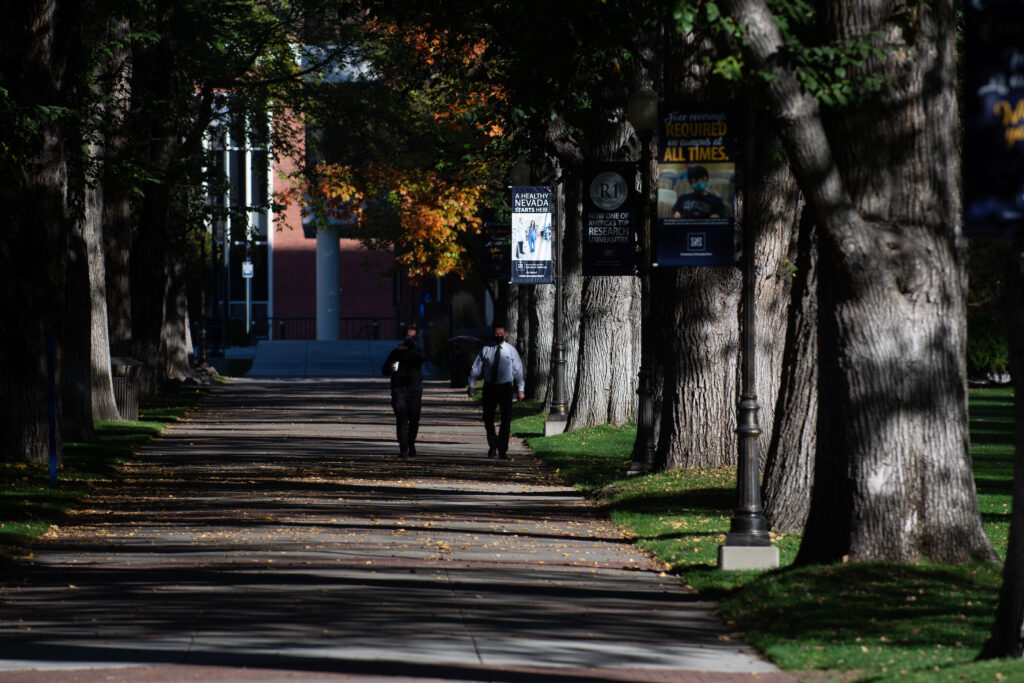
In the end, the regional push-and-pull was for naught, as last-minute compromises gutted the original draft’s most controversial provisions. SB287’s final form left UNR’s funding for its Cooperative Extension untouched, while still allowing for formal legal recognition of UNLV and DRI as land grant institutions.
For the Council for a Better Nevada, also a major booster of the bill, Hardy said the goal for 2021 was securing formal land-grant status in Nevada law — not pursuing millions of dollars in funding made available to UNR through its operation of the Cooperative Extension, as the original draft did.
“In retrospect, if I had to do it again, I would have only included section six that provision related to codifying land grants in the first place,” Hardy said. “Because that was the portion that we were interested in.”
The ultimate financial effect of SB287’s addition of grant application opportunities will likely take months or years to play out as UNLV and DRI faculty apply for the grants at issue.
SB287 was only one of many higher education-related bills that survived the session. Other major legislation approved by lawmakers and signed by the governor includes:
- SB434: Restores $25 million in state funding for the medical education building under construction for UNLV’s nascent Kirk Kerkorian School of Medicine. Originally allocated in 2017 but cut during the 2020 special session, Hardy said the money will go toward furnishing the interior once construction is complete.
- SB347: A wide-reaching bill that, among other things, directs the regents to create a sexual misconduct task force and create a system-wide campus climate survey, and also removes citizenship requirements for the Millennium Scholarship, Silver State Opportunity Grant and the Nevada Promise Scholarship. The measure was the end result of three bills — two addressing Title IX issues and a third focused on scholarship requirements — merged into one.
- SB342: Allows the Board of Regents to give final approval to a 50-year partnership deal between the UNR Medical School and Reno-area health care giant Renown Health. Hailed as “transformative” by proponents, the deal was approved by regents in a 12-1 vote at their June meeting.
- SB128: Directs the state treasurer to conduct a study on the effectiveness of publicly-funded scholarships and grant programs. The study would evaluate a range of metrics, from the administrative costs of these programs to the short and long-term viability of publicly funded scholarships.
- SB327: Though not wholly related to NSHE, this bill in part expands definition of racial discrimination to include ancestry, color and certain traits like hairstyles. The bill also prohibits discrimination based on “traits associated with race” for enrollment in Nevada schools, including institutions under NSHE’s umbrella.
Updated, 7/2/21 at 11:30 a.m. - This story was updated to include additional details on the Nevada Board of Regents as among the few elected boards nationwide, and to correct a transcription error. NFA Vice President Kent Ervin said "for efficient," rather than "or efficient."
